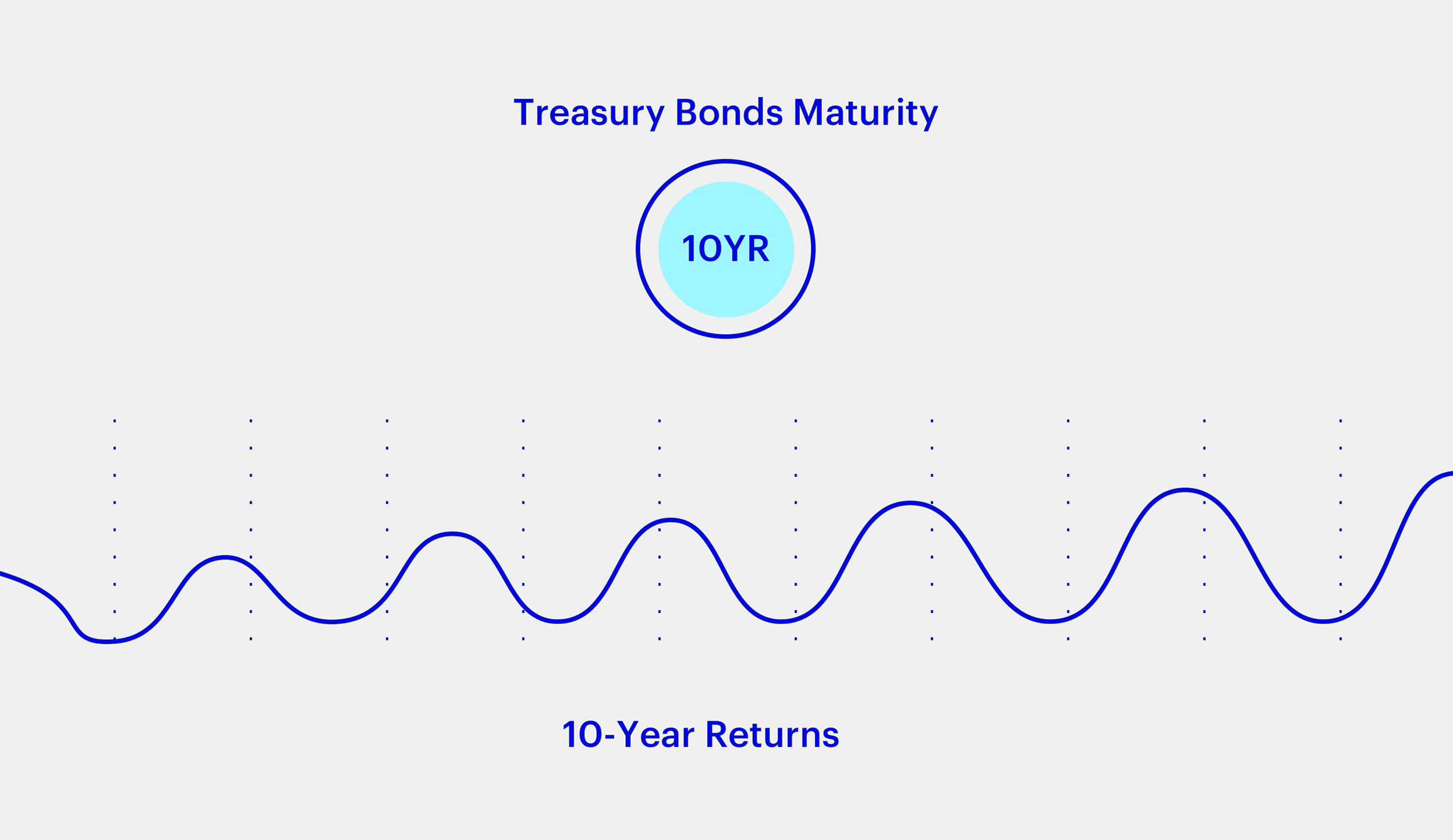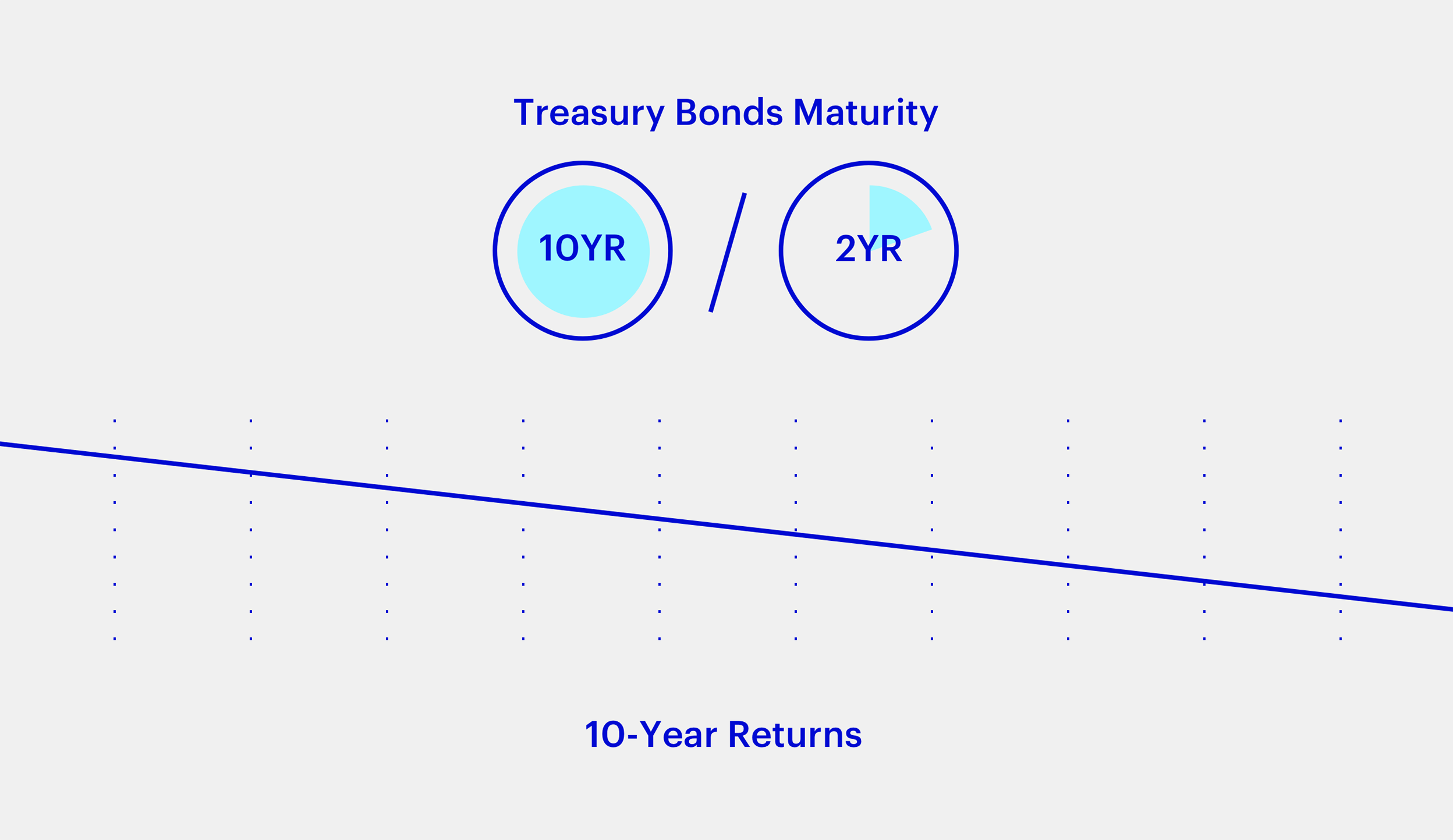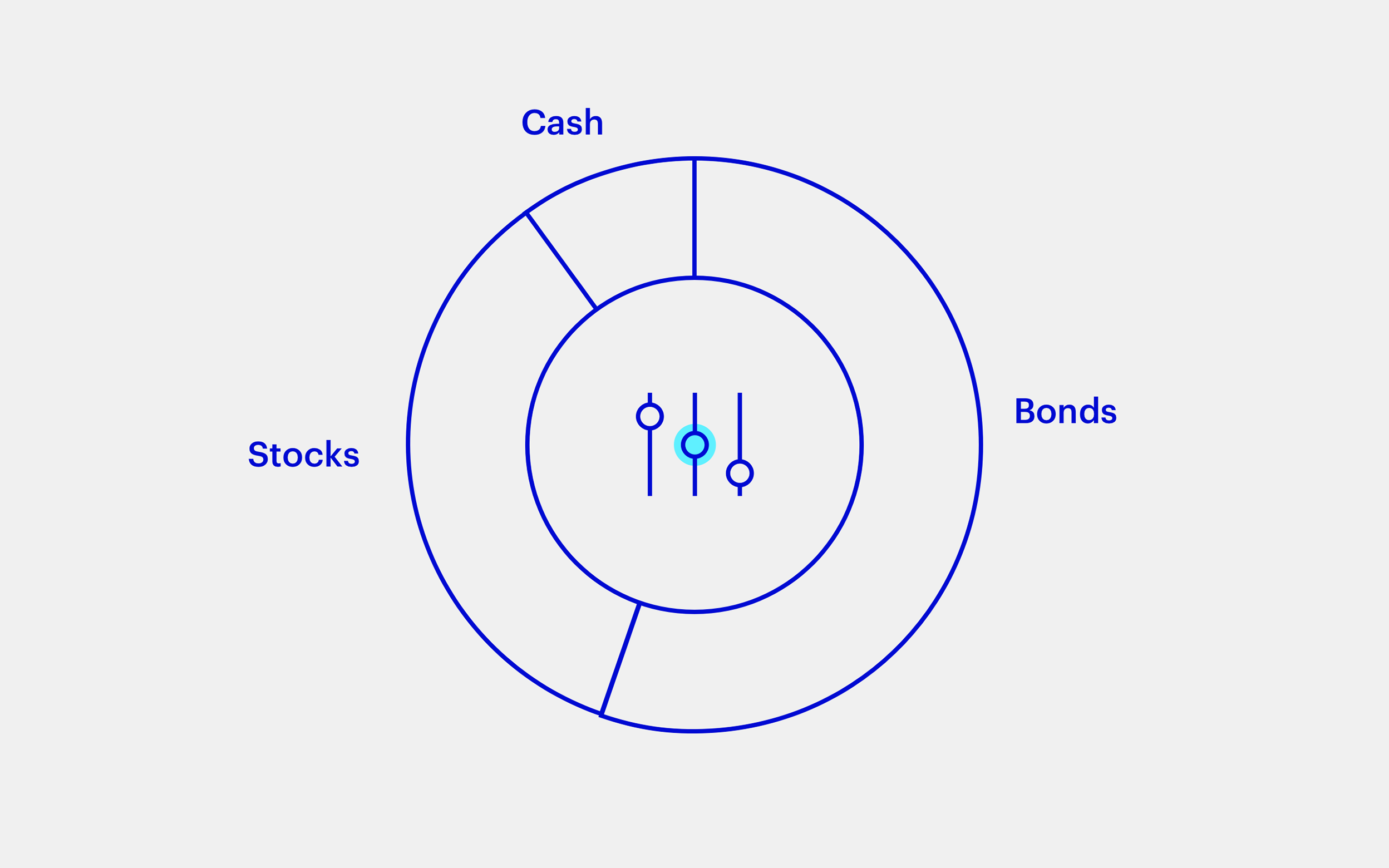About Invesco Peak Index
Stock market exposure built from high quality companies. Bond exposure that responds to changes in market conditions. Daily, dynamic allocation that seeks to smooth out the roller coaster ups and downs of the market. All delivered in one package.
How It Works
High Quality Companies
Exposure to high quality companies has been shown by academics and practitioners alike to deliver compelling results over time.2 The Invesco Peak Index focuses on three key components to gauge company quality in order to seek to deliver better returns than generic stock market exposure:
Responsive Bond Exposure
In addition to positions in high quality stocks, the Invesco Peak Index also provides exposure to bonds as an additional and complementary source of returns. Another attractive feature of bonds – and, in particular, US Treasury bonds – is that they quite often experience less dramatic swings in returns relative to stocks.

In most market environments, bond exposure in the Index comes from holdings of 10-year Treasury bonds, which, historically, have delivered stronger returns than other Treasury bonds with shorter maturities.3

However, a steady drop in the price of 10-year Treasuries often signals a rise in interest rates. When this happens, the index allocates a portion of the bond exposure away from 10-year Treasuries and into two-year Treasuries. These shorter-dated bonds tend to offer more price stability under these conditions. The goal is to provide more defensive exposure and help cushion the impact of declining bond prices.
Dynamic Asset Allocation
Exposure to stocks, bonds, and cash are dynamically adjusted daily to seek a smoother performance experience for the Invesco Peak Index over time.

For instance, as the riskiness of its stock holdings increases, the Index will shift away from stocks and into bonds.
On the other hand, as the riskiness of those stock holdings decreases, the Index will shift away from bonds and into stocks.
And as the riskiness of the combination of stocks and bonds rises and falls, the Index will allocate more and less, respectively, to cash.
Invesco’s Factor Experience
The centerpiece of the Invesco Peak Index is a focus on quality companies. Quality is a stock characteristic, or factor, shown by academics and practitioners to deliver more attractive returns historically than the broad market.2 Factor investing is nothing new. This precise way of looking at the market and choosing securities based on attributes associated with higher returns has been around for decades. In fact, Invesco has been working with factor strategies since 1983. Here’s why Invesco is a global leader in factor investing:
- The Invesco US Quality Index has returned 12.20% annualized and the Invesco US Large Mid Cap Index has returned 10.06% annualized since December 31, 2002 as of June 30, 2022. The Invesco US Large Mid Cap Index was launched on 10/20/2017 and the Invesco US Quality Index launched on 08/03/2020. All data prior to launch dates is back-tested (i.e. calculations of how the index might have performed over that time period had the index existed). Back-tested performance is subject to inherent limitations because it reflects retroactive application of an Index methodology and selection of index constituents with the benefit of hindsight. Past performance, actual or back-tested, is no guarantee of future performance.
- Sloan, R. 1996. Do stock prices fully reflect information in accruals and cash flows about future earnings? The Accounting Review 71 (July): 289-315. Ikenberry, D., J. Lakonishok, and T. Vermaelen. Market underreaction to open market share repurchases. Journal of Financial Economics 39 (1995): 181-208. Novy-Marx, R. The other side of value: the gross profitability premium. Journal of Financial Economics 108 (2013): 1-28.
- For example, the annualized returns from December 31, 2002, to September 30, 2020, for the Credit Suisse 10-Year US Treasury Note Futures Index and Credit Suisse 2-Year US Treasury Note Futures Index are 2.70% and 0.61%, respectively. Past performance is not a guarantee of future results.
- As of February 28, 2021. Factor assets represent Invesco's full range of factor-based products and are available via affiliates of Invesco Ltd.
Although bonds generally present less short-term risk and volatility than stocks, the bond market is volatile and investing in bonds involves interest rate risk; as interest rates rise, bond prices usually fall, and vice versa. Bonds also entail issuer and counterparty credit risk, and the risk of default. Additionally, bonds generally involve greater inflation risk than stocks.
This does not constitute a recommendation of any investment strategy or product for a particular investor. Investors should consult a financial professional before making any investment decisions.
Invesco Indexing LLC is an indirect, wholly owned subsidiary of Invesco Ltd. The group is legally, technologically and physically separate from other business units of Invesco, including the various global investment centers.

